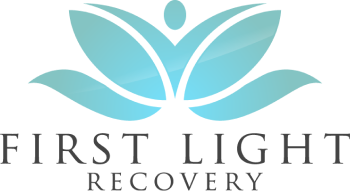Understanding PTSD and Co-Occurring Disorders
Impact of Traumatic Events
Post-traumatic stress disorder (PTSD) often develops following direct or indirect exposure to extremely stressful events, such as combat, life-threatening accidents, or natural disasters. The symptoms include re-experiencing the trauma, avoidance of reminders, and heightened arousal (PubMed Central). It’s important to acknowledge that PTSD affects more than half of individuals who have encountered these stressful situations.
Prevalence of PTSD and Comorbidities
Epidemiologic studies reveal that around 25% to 30% of people experiencing traumatic events may develop PTSD. The lifetime prevalence rate is approximately 6.8%, while the average prevalence sits at about 8% (PubMed Central). Additionally, PTSD frequently co-occurs with disorders such as depression, anxiety disorders, and substance abuse. This comorbidity significantly complicates treatment and contributes to a substantial financial burden on both individuals and healthcare systems.
| Prevalence Rates | Percentage |
|---|---|
| Lifetime prevalence of PTSD | 6.8% |
| Average prevalence of PTSD | 8% |
| Individuals developing PTSD | 25% – 30% |
Understanding the prevalence of PTSD and its associated disorders is crucial for you or a loved one as you consider treatment options. First Light Recovery provides industry-leading support for individuals facing these challenges, offering tailored residential mental health treatment and programs designed to address co-occurring disorders. Utilizing such specialized care can facilitate a comprehensive approach to managing PTSD and its related conditions effectively.
Importance of Social Support in PTSD Treatment
Role of Social Support
Social support plays a critical role in the recovery process for individuals suffering from PTSD. It encompasses emotional, informational, and practical assistance from various relationships such as family, friends, and romantic partners. Research indicates that effective social support can buffer against the negative psychological consequences of traumatic events, including PTSD and depression. It enhances coping capabilities and can significantly influence treatment outcomes.
For instance, relational partners can provide crucial support that facilitates personal coping strategies. Studies highlight that the qualitative support offered—how well it meets the needs of the individual—can be more impactful than the sheer size of the support network. This implies that having a few close, understanding relationships may be more beneficial than having a large number of acquaintances.
Effectiveness in Treatment Outcomes
The effectiveness of social support in mitigating PTSD symptoms is well-documented. Individuals with a strong support system tend to exhibit less severe PTSD symptoms and lower rates of comorbid issues, such as substance use disorders. Among veterans, for example, increased social support was predictive of lower PTSD symptoms and fewer alcohol use symptoms, as noted in studies from NCBI.
The following table summarizes key findings on the impact of social support on PTSD treatment outcomes:
| Aspect | Effect |
|---|---|
| Severe PTSD Symptoms | Reduction with strong social support |
| Alcohol Use Symptoms | Lower rates with increased social support |
| Recurrence Rates of PTSD | Decreased with effective support systems |
| Coping Strategies | Enhanced through relational partner support |
Social support not only assists in coping and recovery but also fosters resilience against the stressors associated with trauma, facilitating a more effective PTSD treatment. Engaging in shared activities and open communication within supportive relationships allows individuals to process their trauma more effectively.
For those seeking residential mental health treatment for PTSD, understanding the necessity of social support can lead to improved outcomes. By fostering connections and nurturing relationships, you or a loved one can create a more supportive environment that promotes healing and recovery from PTSD.
Medication for PTSD Symptoms
SSRIs and SNRIs for PTSD
Selective Serotonin Reuptake Inhibitors (SSRIs) and Serotonin-Norepinephrine Reuptake Inhibitors (SNRIs) are commonly prescribed medications for managing symptoms of Post-Traumatic Stress Disorder (PTSD). Research indicates that certain SSRIs and SNRIs are among the most effective treatments available. However, not all medications in these classes effectively treat PTSD (VA National Center for PTSD).
For those considering medication as part of their PTSD treatment plan, it is essential to consult a healthcare professional who can evaluate specific needs and monitor progress.
Mechanism of Action and Effectiveness
SSRIs work by increasing the levels of serotonin in the brain, which can enhance mood and alleviate symptoms of anxiety. SNRIs, on the other hand, boost both serotonin and norepinephrine. The combination of these neurotransmitters helps to improve mood, reduce anxiety, and promote emotional stability.
Here’s a summary of frequently prescribed SSRIs and SNRIs for PTSD:
| Medication | Type | Common Side Effects |
|---|---|---|
| Sertraline (Zoloft) | SSRI | Upset stomach, sweating, headache |
| Paroxetine (Paxil) | SSRI | Dizziness, sexual side effects |
| Fluoxetine (Prozac) | SSRI | Nausea, insomnia |
| Venlafaxine (Effexor) | SNRI | Fatigue, increased blood pressure |
| Duloxetine (Cymbalta) | SNRI | Dry mouth, constipation |
In general, SSRIs and SNRIs are effective but may take several weeks before noticeable results are observed. Continuing the prescribed regimen is important, even if immediate changes are not perceived (VA National Center for PTSD).
Potential side effects can range from mild to moderate, including upset stomach and sexual side effects, which may persist as long as the medication is taken (VA National Center for PTSD). It is vital for anyone considering these medications to consult with a healthcare provider about potential risks and benefits as part of their overall treatment plan.
For comprehensive support, consider facilities like First Light Recovery that offer tailored approaches to mental health treatment and behavioral health care.
Complementary and Alternative Therapies for PTSD
In addition to traditional therapies, many people are exploring complementary and alternative therapies (CAM) for managing post-traumatic stress disorder (PTSD). These approaches provide additional options and can enhance existing treatment plans.
CAM Approaches Overview
Complementary and alternative medicine encompasses a variety of practices aimed at promoting mental and physical well-being. CAM therapies used for PTSD treatment include:
- Acupuncture
- Moxibustion
- Chinese herbal medicines
- Meditation
- Yoga
- Deep-breathing exercises
- Progressive relaxation
- Tai Chi
Research indicates that numerous CAM approaches have been clinically effective in treating PTSD symptoms. Some studies provide support for the positive effects of these interventions. Moreover, the incorporation of CAM techniques in treatment plans is increasingly prominent, with 96% of VA specialized PTSD treatment programs offering these options (VA PTSD).
| CAM Therapy | Description |
|---|---|
| Acupuncture | Involves inserting thin needles into specific body points to regulate energy flow. |
| Meditation | Focuses the mind to achieve clarity and emotional stability. |
| Yoga | Combines physical postures, breathing techniques, and meditation for overall mental health. |
| Mindfulness-Based Stress Reduction (MBSR) | A structured program that teaches mindfulness practices to reduce stress and improve mental well-being. |
Efficacy of CAM Therapies
Various CAM therapies show promise for PTSD treatment, though the strength of evidence can vary. Practices such as mindfulness-based stress reduction (MBSR) have received a “weak for” recommendation according to the VA/DoD Clinical Practice Guidelines, indicating some level of efficacy in reducing PTSD symptoms (VA PTSD). Other techniques, including acupuncture and yoga, have also produced positive outcomes based on controlled studies but lack sufficient evidence for strong endorsements in clinical settings.
The growing interest in integrating CAM practices into standard treatment reflects their potential in improving mental health. Using these approaches alongside traditional methods could benefit individuals seeking comprehensive care for PTSD. For more information about mental health treatment options, consider exploring residential mental health treatment or inpatient mental health treatment.
Cognitive Behavioral Therapy for PTSD
Efficacy of CBT in PTSD Treatment
Cognitive Behavioral Therapy (CBT) is recognized as a vital treatment option for individuals experiencing PTSD. Research shows that CBT can effectively reduce symptoms following various traumatic events, including terrorism, sexual assault, and natural disasters (NCBI). The therapy focuses on changing maladaptive cognitive distortions, which are often central to PTSD, and has been associated with physiological changes that indicate improvement in symptoms.
CBT has been demonstrated to help individuals process traumatic memories and develop healthier thought patterns. In various studies, those undergoing CBT for PTSD reported significant reductions in symptom severity, with many experiencing an enhanced quality of life. Below is a summary of effective trauma types addressed by CBT:
| Trauma Type | Effectiveness of CBT |
|---|---|
| Terrorism | High |
| War Trauma | High |
| Sexual Assault | High |
| Road Traffic Accidents | Moderate to High |
| Natural Disasters | Moderate |
| Adolescent Trauma | High |
Preventive Role and Cultural Validity
CBT also has a preventive role, particularly for individuals at risk of developing chronic PTSD. Engaging in multiple-session trauma-focused CBT soon after experiencing a traumatic event can mitigate long-term symptoms. Evidence suggests that initiating therapy within three months of trauma yields better outcomes for those exhibiting early signs of PTSD (NCBI).
Cultural validity is crucial for the effectiveness of CBT. Adaptations of CBT materials and strategies that align with cultural contexts can enhance relatability and engagement for diverse populations. This understanding ensures that therapy resonates with individuals from various backgrounds, thus improving treatment outcomes. To learn more about treatment options for PTSD, consider exploring inpatient PTSD rehab and residential mental health treatment facilities.
In summary, CBT stands as a robust approach for PTSD treatment, proving both effective in symptom reduction and valuable in preventive measures for individuals at risk.
Using Technology in PTSD Treatment
In today’s digital age, technology has become a vital tool in delivering effective PTSD treatment. Among the innovative approaches are Internet-based Cognitive Behavioral Therapy (CBT) and video conference therapy, which provide accessible and effective options for individuals seeking help.
Internet-Based CBT
Internet-based CBT has shown promising results for individuals dealing with PTSD. This method allows you to engage in therapy sessions online, often accompanied by therapist support through email. Studies have indicated that online treatment can lead to clinically significant reductions in PTSD severity and symptomatology. This option offers flexibility and convenience, making it easier for you to fit therapy into your daily life.
The effectiveness of Internet-based CBT lies in its structured approach, which typically includes:
- Interactive modules that guide you through coping strategies
- Self-assessment tools to evaluate your progress
- Access to educational resources about PTSD and its treatment possibilities
Given the accessibility of online sessions, they are an excellent alternative for those who may have difficulty attending in-person therapies. For more information on mental health treatment options, consider exploring our residential mental health programs.
Video Conference Therapy
Video conference therapy is another innovative approach that allows remote access to mental health professionals. This method has demonstrated significant declines in the frequency and severity of post-traumatic symptoms, particularly in children. Through video calls, you can participate in real-time therapy sessions with a licensed professional, allowing for direct interaction and personal support.
Benefits of video conference therapy include:
- The ability to connect with therapists from various locations, enhancing your options for specialist care
- Convenience that eliminates travel time and associated costs
- A comfortable environment that can ease the anxiety often related to in-person appointments
This form of therapy combines traditional therapeutic approaches with the advantages of modern technology, ensuring that your treatment remains effective even when you’re unable to attend sessions in person. For those seeking specialized support, consider looking into our options for dual diagnosis treatment centers, which can address co-occurring disorders alongside PTSD.
Incorporating technology into PTSD treatment can create a more customized and flexible approach to recovery, making it easier for you or your loved one to engage in the healing process. Whether it is Internet-based CBT or video conference sessions, both options offer valuable pathways to improve mental health outcomes.




